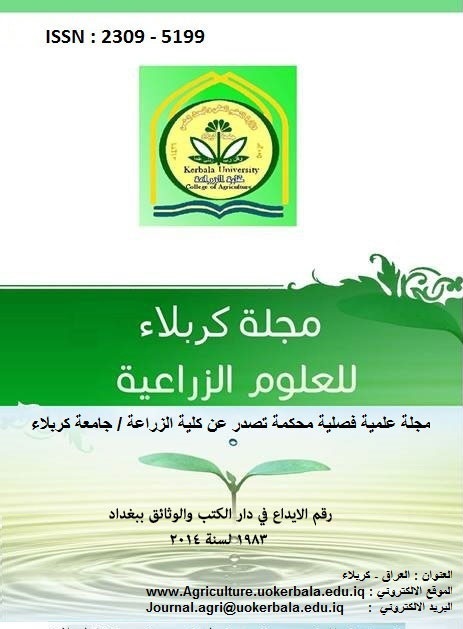Evaluated efficiency of Trichoderma viridi and Sewak (Arak) Powder to Control The Root Rot Fungi of Pistacia khinjik Seedlings
DOI:
https://doi.org/10.59658/jkas.v4i1.281Abstract
The current study showed the effect of Trichoderma viridi on growth inhibition of Pistasia khinjik seedling root rot fungi which usually used in biological control with pathogens and using four concentrations of sewak powder 0 , 10 , 20 , 30 gm/l represented control treatment .
Isolation results showed that the four fungi Fusarium chlamydosporium had 50% in frequency ratio then the fungus Rhizoctonia solani and Macrophomina phaseiolina had 16.6% then Fusarium culmorum which had 8.3 % .
The results of biological control of tested fungi by Trichoderma viridi showed that all fungi were affected by biological resistance in different degrees , the degrees of inhibition was the first and second degree so those two degrees make the fungi with high parasitic abilities against pistasio root rot fungi .
The results of bioassay of sewak powder in several concentrations showed that incorporeal differences in the efficiency of sewak powder effect on root rot fungi control as compared with biological control for the same fungi where the fungi affected in different ratios, F. chlamidosporum inhibited aconcentration 10gm/l of sewak powder which was maximum inhibition ratio 77% , Rhizoctonia solani , F. culmorum , M. phaseolina showed inhibition ratios 72 , 49 , 28 % respectively , Rhizoctonia solani showed a height ratio at two concentrations 20 and 30 gm / l , inhibition ratio were 40 and 55 % , while the other fungi had no effect even with high concentrations of sewak powder .
R. solani was more fungi affected with concentration stepped comparative with others fun
Downloads
Published
How to Cite
Issue
Section
License
Copyright (c) 2017 Copyright (c) 2024 is the Author's article. Published by the Journal of Kerbala for Agricultural Sciences under a CC BY 4.0 license

This work is licensed under a Creative Commons Attribution 4.0 International License.
Licensing Terms
All articles are published under a Creative Commons License and will be directed to the Creative Commons Attribution 4.0 International License (CC BY 4.0) That permits use, distribution, and reproduction in any medium, provided the original work is properly cited. This license also allows the work to be used for commercial purposes.
Use by both non-commercial and commercial users
This content is licensed under a Creative Commons Attribution 4.0 International (CC BY 4.0) license, permitting use by both non-commercial and commercial users. Individual users may access, download, copy, display, and redistribute the articles to colleagues, as well as adapt, translate, and text- and data-mine the content, subject to the following conditions:
- The author's moral rights, including the right of attribution and the right to protect their work from derogatory treatment, are respected.
- Where content in the article is identified as belonging to a third party, users must ensure that any reuse complies with the copyright policies of the owner of that content.
- If the article content is reused for research or educational purposes, users should maintain a link to the appropriate bibliographic citation, including the DOI and a link to the published version on the journal's website.

